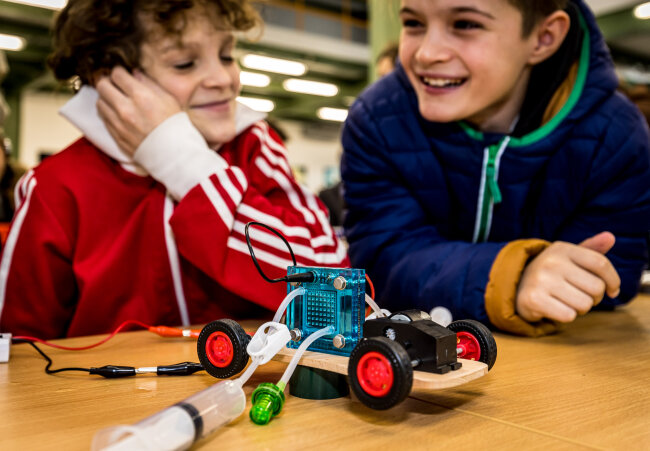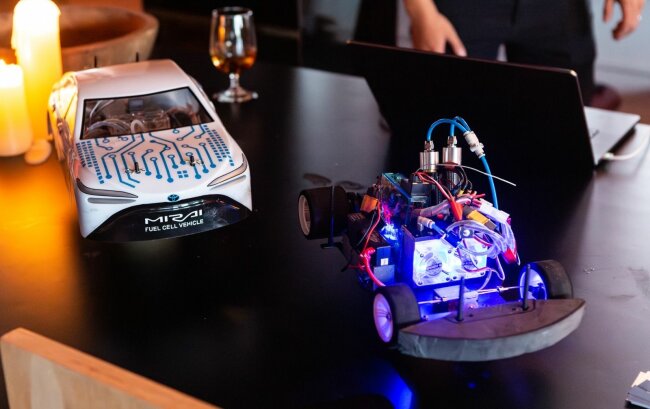The Problem with STEAM Education
STEAM education is an extremely popular educational approach practised in schools throughout the world. Recently, however, many educators and school administrations have begun to question the value of STEAM education. With critiques ranging from a lack of access to a scarcity of meaningful integration of the different disciplines – we’re here to set the record straight concerning the many common criticisms of a ‘STEAM’ educational approach.
What is STEAM Education?
STEAM education is an educational approach that fosters critical thinking, creativity, problem-solving, and innovation skills in students in addition to traditional science and engineering knowledge. Through combining Science, Technology, Engineering, Arts, and Mathematics, STEAM education challenges students to come up with creative and innovative ways to approach hands-on, project-based learning, - drawing on a range of STEM and Arts skills to tackle real-world problems.
Through completing these real-world projects, students also gain employable soft skills such as collaboration and effective communication as well as more traditional science and engineering abilities.
Key to STEAM education is a meaningful integration of the arts with STEM subjects. As the bipartisan U.S. Congressional STEAM Caucus summarizes:
Advocates for STEAM Education, in the context of advocacy for STEM education, argue that studying STEM subjects alone is not sufficient. Supporters of this concept cite Arts [and Design] as having benefits in mental health, thinking processes, and creativity to validate this assertion (Allina, 2018, p. 84).


The Problem with STEAM Education
Educators often face a significant problem with STEAM education: the lack of any meaningful connection between science, technology, engineering, mathematics and other fields like social sciences, arts, and humanities.
For instance, a 2021 report from researchers at the University of California Irvine and University of Indiana argued that STEAM education has often been used in ways that do not ‘deeply integrate’ STEM education with the Arts. Other researchers, such as Myint Swe Khine, suggest that STEAM education should focus more on interdisciplinary problem-solving rather than just integrating subjects.
Another potential issue with STEAM education is that it may not be accessible for all students, particularly those from underserved communities. The equipment needed for real-world technical projects is often prohibitively expensive, and as many as half of all children in the United States don’t have access to the resources needed for STEAM education.
This lack of access to STEAM education can result in limited opportunities for students to pursue careers in high-demand fields such as engineering and programming, limiting their means of getting a well-paying job and achieving economic mobility.
What are the Solutions?
Integration of Disciplines
Meaningful integration of different subjects – such as Science, Technology, Engineering, Arts, and Mathematics – is essential in overcoming the potential pitfalls of STEAM education. Designing, engineering, constructing and racing a hydrogen-powered car, for example, provides opportunities for students to deeply integrate different disciplines in solving real-world problems. Students must make use of data science, mechanical engineering, art and design, and hydrogen chemistry in the process of creating their 1:10-scale race car.
Similarly, using computer-aided design to create a car body with distinctive artwork draws on students' mathematical and engineering skills (optimizing the car body to be aerodynamic), but it also relies on the integration of these STEM skills with art and design. The result is that students blend knowledge from the arts with mathematics and engineering skills in creating the perfect shell for their renewable energy car.
Barriers to STEAM Education
While the cost of equipment needed for STEAM education can be a barrier for students from underserved communities – a variety of organizations from around the world sponsor schools to take part in STEAM activities. This enables those students who otherwise wouldn't have an opportunity to gain employable STEAM skills to participate in programs that go beyond traditional STEM education. Access to this type of real-world STEAM education not only opens opportunities to meaningfully integrate science and engineering with the arts, but boosts students’ employability and can lead to economic mobility among disadvantaged students.

